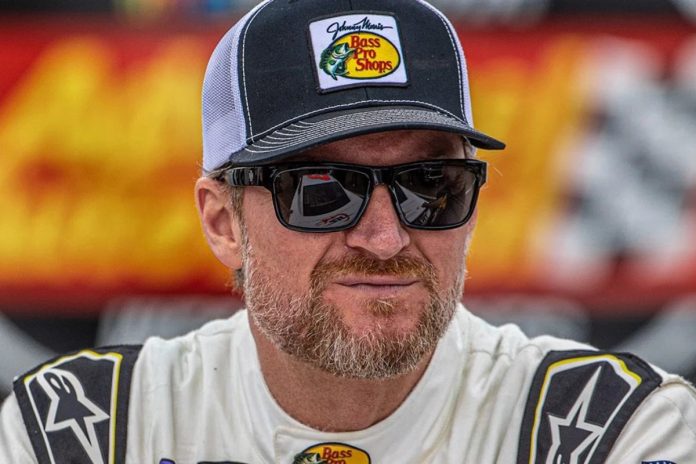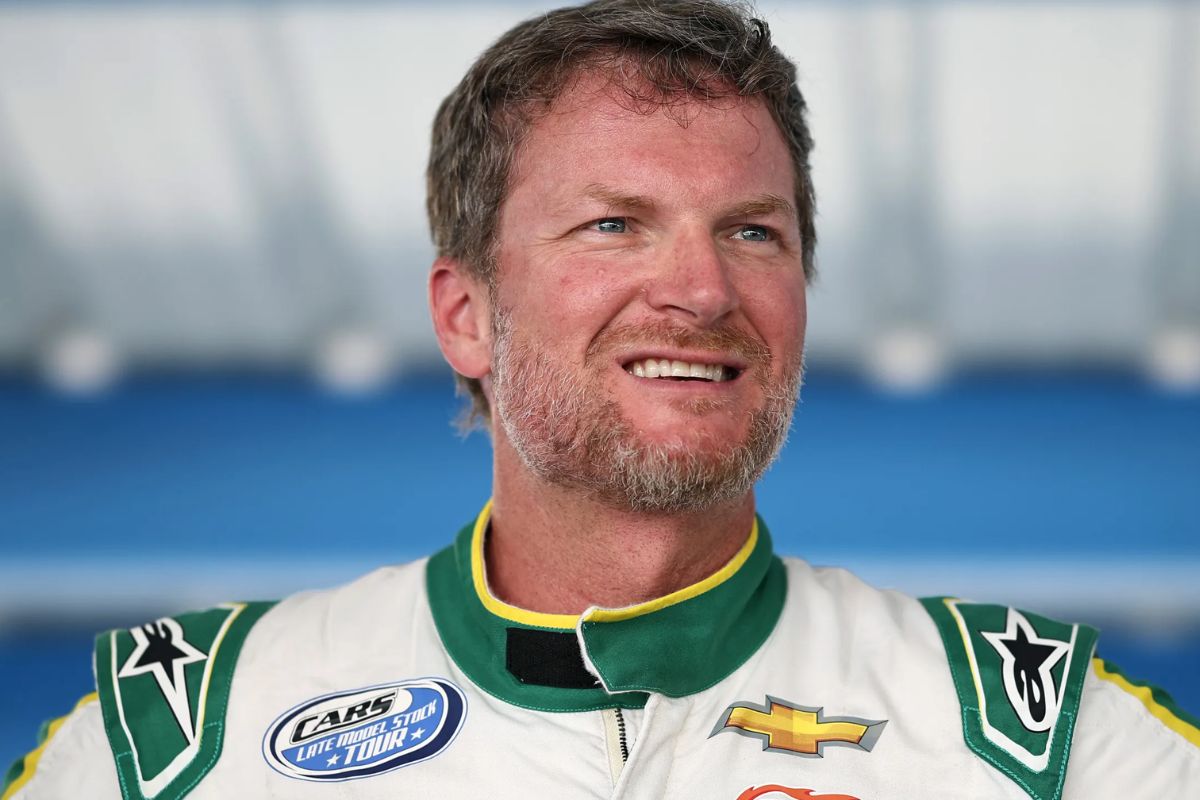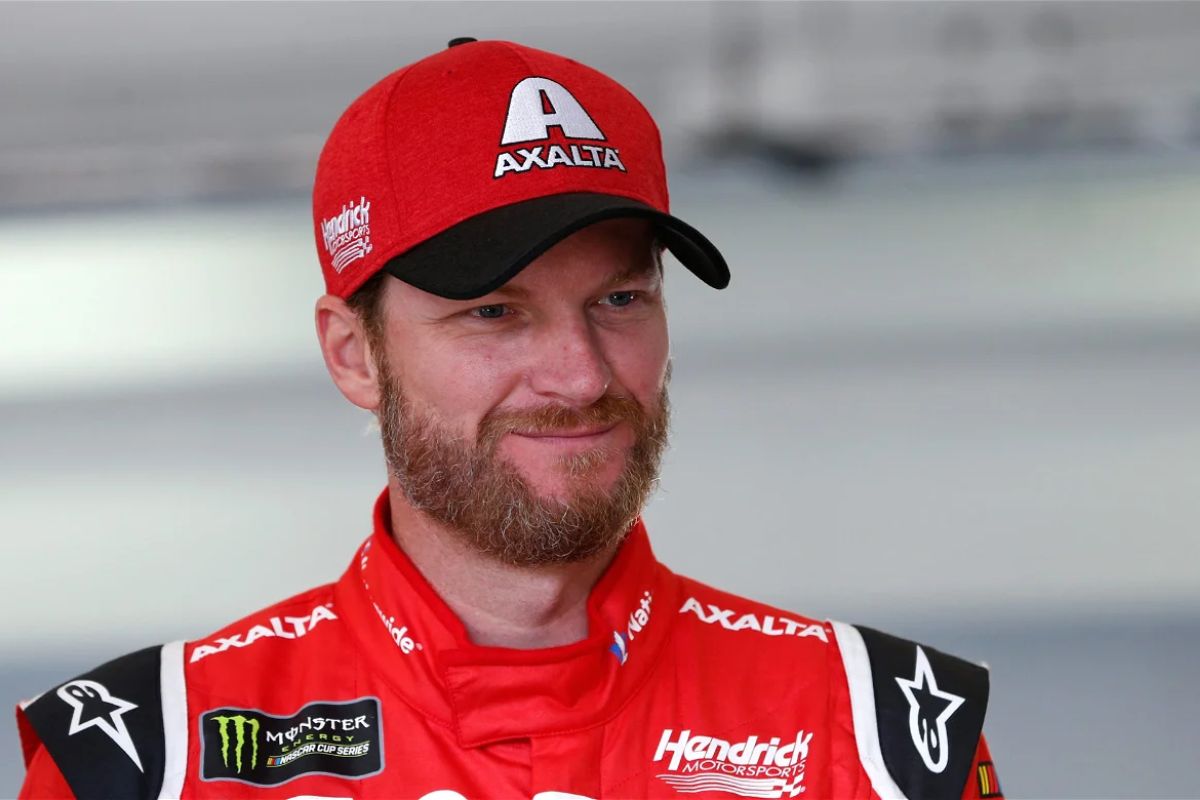Dale Jr. Says Teen Truck Trend is Risky: In a recent expose, Dale Earnhardt Jr. has drawn attention to the increasingly popular yet controversial trend known as the Carolina Squat, prevalent among young truck enthusiasts. This modification, which involves altering the truck’s suspension to tilt the vehicle forward, raises significant safety concerns. Dale Jr. articulates the potential hazards associated with this trend, including impaired visibility and uneven tire wear, which could lead to dangerous driving conditions and increased accidents.
Key Takeaways
- Dale Jr. criticizes the “Carolina Squat” modification for compromising truck rear suspension and driving dynamics.
- Altered suspension angles can lead to universal joint issues and mechanical failures.
- The trend affects toe alignment, resulting in faster tire wear and steering problems.
- Primarily popular among young adults aged 16 to 24, driven by social status and peer influence.
- Dale Jr. stresses the importance of considering vehicle health and safety with such modifications.
Dale Earnhardt Jr. on Carolina Squat Modification Trend
In a recent episode of his podcast, Dale Jr. Download, former NASCAR driver Dale Earnhardt Jr. investigated the controversial automotive modification trend known as the Carolina Squat, shedding light on its origins and the practical implications of this distinctive vehicle stance. Earnhardt Jr. detailed how this trend, which involves markedly lifting the front of a truck while lowering the rear, was originally inspired by the Baja racers of California. These racers modified their vehicles to optimize speed and visibility on uneven desert terrains, thereby enhancing their racing efficiency.
Earnhardt Jr.’s analysis delved into the technical aspects of the modification, explaining how altering the truck’s geometry in this way affects its aerodynamics and center of gravity. The front lift is usually achieved by using oversized suspension components or adjusting existing ones to tilt the vehicle. This adjustment, while visually striking, serves a practical purpose in its original context by improving the vehicle’s approach angle and distributing weight back towards the engine for better traction in soft, sandy environments.
Moreover, he emphasized that the adaptation of this modification from professional racing to everyday vehicles reflects broader automotive culture trends, where street vehicles often mimic specialized racing aesthetics and functionality.
Concerns Raised by Dale Jr.
While Dale Earnhardt Jr. appreciates the aesthetic and functional appeal of the Carolina Squat, he also raises significant safety and maintenance concerns associated with this modification. His apprehensions primarily stem from the alterations to the truck’s original engineering, which are not just important but potentially detrimental to the vehicle’s structural integrity and functionality.
Dale Jr. highlighted several mechanical issues that could arise from the Carolina Squat. The rear suspension, designed to absorb shocks and maintain wheel alignment, is compromised when modified extensively. This alteration can lead to a reduced lifespan of the suspension components and potentially hazardous driving dynamics, particularly in handling and stability. The impact on universal joints, which are critical for transmitting power from the engine to the wheels, is also concerning. These joints may experience increased wear and tear due to altered angles, leading to premature failure and possible breakdowns.
“The universal joints, all the rear suspension the toe alignment in the front all that’s getting jacked up right, You know, you’re going to have issues, the universal joints coming out of that truck in about four years do you know that you’re probably knocking the rear seal out of the transmission in the crank case or the 4×4 crank case. Bad thing to do to your car or your truck”-Dale JR
Furthermore, the modification affects toe alignment, which is crucial for ensuring the tires wear evenly and maintain proper contact with the road. Incorrect toe alignment, as a result of the Carolina Squat, not only leads to faster tire wear but can also cause issues with steering precision and fuel efficiency.
Demographics and Motivations
Earnhardt Jr. observes that the main demographic engaging in the Carolina Squat modification trend consists mostly of young adults aged 16 to 24, driven by social influences and a desire to gain status among peers. This age group, typically at a developmental stage characterized by identity formation and peer validation, appears particularly susceptible to automotive trends that promise increased visibility and social acclaim.
“We’re going to assume large majority of people that are doing this are anywhere from 16 to 20-24 years old. Coming out of high school going into college what are you worried about at that point in your life right you’re worried about girls yeah right everything’s about like I’m wearing this and I’m doing this and I’m everything is geared toward because I believe this makes me more attractive.”-dale jr.
Analyzing the factors influencing this demographic, it becomes evident that the allure of the Carolina Squat isn’t merely about automotive preference but is intertwined with the cultural constructs of masculinity, power, and rebellion. These young adults are traversing a social landscape where standing out or being perceived as defiant can bolster personal and group identity.
Dale Jr.’s Idea for Infield Bar at Talladega
Dale Earnhardt Jr.’s proposal to introduce an infield bar at Talladega Superspeedway aims to greatly improve the spectator experience by capitalizing on the vibrant social atmosphere characteristic of race weekends. This initiative acknowledges the inherent communal spirit that pervades the infield, where fans congregate not just to witness the race, but to partake in a shared cultural festivity that celebrates speed, skill, and sportsmanship.
“I think about the boulevard the partying people come to that race for the party for the hell raising as much as the race itself yeah right the race is really the the desert the main course is the experience the three or four night experience of being in thatenvironment partying every single day drinking beer roaming around.”-dale jr.
By situating a dedicated bar within this milieu, Earnhardt Jr. envisages a hub that fosters interaction among fans, enriching their engagement and enjoyment. This space would likely become a focal point for socializing, offering a structured yet relaxed environment where fans can mingle, discuss race tactics, and share their experiences and predictions. The bar’s strategic location in the infield would ensure that it remains at the heart of the action, enabling patrons to feel immersed in the event without missing any of the on-track excitement.
“There was somebody that would set up a bar he paid money to go in it was a 19:08 cover and everybody in the infield would go into this tent right and drink and they H they had a bar bar and servers and so employees they were yeah I mean listen man they had a flatbed with some ladies dancing on it”.-dale jr.
Furthermore, the concept of the infield bar aligns with broader trends in sports entertainment, where venues increasingly seek to provide holistic experiences that go beyond the core sporting event.
Potential Financial Impact
Introducing an infield bar at Talladega Superspeedway presents a promising avenue for generating significant revenue, as evidenced by previous successful ventures in similar makeshift setups. Earnhardt Jr.’s proposal is grounded in the observation of increased visitor engagement and spending at events where unique amenities such as infield bars were available. This concept aligns with economic theories that emphasize the creation of value-added services to enrich customer experience and thereby increase spending per capita at large-scale events.
Dale's idea: A bar in the infield at Talladega. Would you go? 🍻 pic.twitter.com/T1N6ZWYPAm
— Dirty Mo Media (@DirtyMoMedia) April 26, 2024
From a financial perspective, the implementation of a permanent infield bar could lead to a multifaceted increase in revenue streams. To begin with, direct sales from the bar would obviously contribute to increased turnover. More subtly, the presence of such a facility can improve the overall attendee experience, potentially boosting ticket sales and promoting higher attendance rates in future events. This is particularly pertinent considering the competitive nature of entertainment and leisure industries, where differentiation is key to attracting and retaining customers.
News in Brief: Dale Jr. Says Teen Truck Trend is Risky
Dale Earnhardt Jr.’s critique of the Carolina Squat modification trend highlights the significant risks associated with such alterations. By clarifying the adverse effects on vehicle dynamics and safety, Earnhardt provides a vital perspective that questions the aesthetic appeal of this trend among young truck enthusiasts.
His demand for prioritizing vehicular functionality and safety is pivotal in redirecting youth culture towards more sustainable and responsible automotive practices, ultimately aiming to improve road safety and vehicle longevity.
Our Reader’s Queries
Q. Does Dale Earnhardt Jr. have a wife?
A. Dale Earnhardt Jr.’s journey to finding love took an unexpected turn during the construction of his North Carolina residence. It was here that he crossed paths with his future wife, Amy Reimann, who at the time was employed as an interior designer at the Atlanta-based architectural firm of Wakefield Beasley & Associates. Their serendipitous encounter blossomed into a lasting partnership, adding another chapter to Earnhardt’s story both on and off the track.
Q. Did Dale Earnhardt Jr. ever drive the number 3 car?
A. In the Xfinity Series 300-mile event on February 16, 2002, Dale Earnhardt Jr. made a significant move by teaming up with Richard Childress Racing (RCR). Driving the No. 3 Oreo Chevrolet, it marked Earnhardt’s inaugural start for the organization synonymous with his father’s legendary tenure. This momentous occasion underscored the continuation of the Earnhardt legacy within RCR’s storied history in NASCAR.
ALSO READ: Dale Earnhardt Jr.’s HoF Outrage: Controversial Picks Revealed





